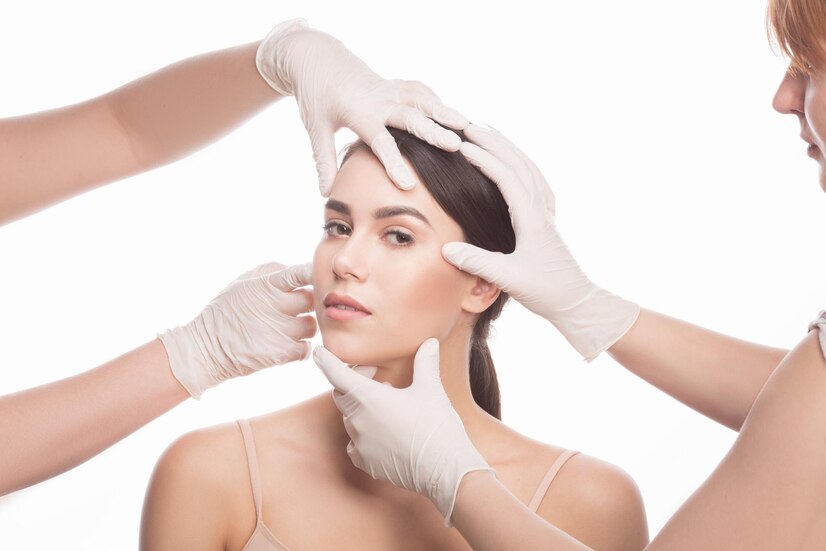Botox for Migraine Relief: What You Need to Know

Botox for Migraine Relief: What You Need to Know
In the realm of migraine management, relief often feels like an elusive dream for many sufferers. However, there’s a surprising contender in the arena of treatments: Botox. While primarily known for its cosmetic applications, Botox has garnered attention for its potential to alleviate the debilitating symptoms of chronic migraines. But how does injecting a neurotoxin into the body translate into pain relief? In this exploration, we delve into the science behind Botox for migraine relief, its efficacy, potential side effects, and what you need to consider before opting for this unconventional remedy.
The Rise of Botox Therapy
In recent years, Botox therapy has emerged as a promising treatment for various medical conditions beyond its initial cosmetic use. While its fame initially stemmed from its ability to smooth wrinkles and fine lines, its potential for migraine relief has propelled it into the spotlight of modern medicine.
This rise is not merely coincidental but stems from a deep understanding of the neurochemical pathways involved in both migraines and muscle contractions. As medical researchers continue to uncover the multifaceted properties of this neurotoxin, its applications in therapeutic contexts are expanding, with migraine treatment being just one of its many avenues.
Understanding Chronic Migraines
Chronic migraines afflict millions worldwide, significantly impacting their quality of life and productivity. Unlike occasional headaches, chronic migraines are characterized by their frequency, lasting for hours or even days at a time. They often come accompanied by symptoms such as nausea, sensitivity to light and sound, and visual disturbances, further exacerbating the suffering of those affected. Understanding the intricacies of chronic migraines involves delving into the complex interplay of genetic predispositions, environmental triggers, and neurological imbalances. While much remains to be elucidated about the exact mechanisms underlying chronic migraines, advancements in research have shed light on potential treatment modalities, including the utilization of Botox.
How Botox Works for Migraine Relief
The application of Botox for migraine relief might seem counterintuitive at first glance, given its origin as a cosmetic injectable. However, its efficacy in alleviating migraines lies in its ability to modulate neurotransmitter release at nerve terminals. When administered into specific sites around the head and neck, Botox inhibits the release of neurotransmitters involved in pain signaling, thereby dampening the intensity and frequency of migraine attacks.
Additionally, Botox may exert its effects by relaxing muscles and reducing tension in the targeted areas, further contributing to pain relief. While the precise mechanisms are still under investigation, clinical evidence suggests that Botox holds promise as a valuable tool in the management of chronic migraines.
Efficacy Rates: What Studies Reveal
Numerous clinical studies have investigated the efficacy of Botox therapy in reducing the frequency and severity of chronic migraines. Overall, research findings indicate that Botox treatment can lead to a significant reduction in migraine days per month, with many patients experiencing a notable improvement in their quality of life. However, it’s essential to note that individual responses to Botox therapy can vary, and not all migraine sufferers may experience the same level of benefit.
Factors such as injection technique, dosing regimen, and patient selection criteria can influence treatment outcomes. Nevertheless, the collective body of evidence supports the use of Botox as a viable option for migraine management in appropriate candidates.
The Mechanisms of Pain Reduction
The mechanisms underlying Botox-induced pain reduction in migraine sufferers are multifaceted and not yet fully elucidated. One proposed mechanism involves the inhibition of neurotransmitter release at nerve terminals, particularly those involved in pain signaling pathways. By interfering with the release of neurotransmitters such as acetylcholine and substance P, Botox effectively dampens the transmission of pain signals to the brain, thereby reducing the perception of pain associated with migraines.
Additionally, Botox may exert its analgesic effects by modulating muscle tension and reducing inflammation in the targeted areas, further contributing to pain relief. While the precise mechanisms are still under investigation, the collective evidence suggests that Botox acts through multiple pathways to alleviate migraine-related pain and discomfort.
The Role of Neurotoxins in Treatment
Neurotoxins, such as botulinum toxin type A (the active ingredient in Botox), play a pivotal role in the treatment of various medical conditions, including chronic migraines. Despite their reputation as potent poisons, when used therapeutically and in carefully controlled doses, neurotoxins can exert beneficial effects on the nervous system. In the case of Botox therapy for migraines, the neurotoxin acts locally at the injection site to modulate neurotransmitter release and muscle activity, thereby interrupting the cascade of events that lead to migraine attacks.
By targeting specific neural pathways involved in pain processing and sensitization, neurotoxins offer a targeted and minimally invasive approach to migraine management, with the potential for long-lasting relief. As our understanding of neurotoxin therapy continues to evolve, so too does its role in the treatment landscape, offering hope to those who suffer from chronic migraines and other neurological disorders.
Identifying Suitable Candidates

Identifying suitable candidates for Botox therapy involves a comprehensive evaluation of various factors, including the frequency and severity of migraine attacks, previous treatment history, overall health status, and individual treatment goals. Generally, Botox therapy is recommended for individuals diagnosed with chronic migraines, defined as experiencing 15 or more headache days per month, with at least 8 of those days meeting the criteria for migraine.
Candidates should also have tried and failed to find relief with other migraine treatments, such as oral medications and lifestyle modifications. Additionally, certain medical conditions or medications may contraindicate the use of Botox, necessitating careful screening and discussion between the patient and their healthcare provider. Ultimately, the decision to pursue Botox therapy should be made collaboratively, taking into account the individual’s unique circumstances and preferences.
Exploring Potential Side Effects
While Botox therapy for migraine relief is generally considered safe and well-tolerated, it is not without potential side effects. Common side effects at the injection site may include temporary pain, swelling, bruising, or redness, which typically resolve within a few days. Some individuals may also experience mild, transient symptoms such as headache, neck pain, or muscle weakness following treatment, though these usually subside without intervention.
Rare but more serious side effects may include allergic reactions, difficulty swallowing or breathing, or spread of the toxin to other areas of the body, resulting in unintended muscle weakness or paralysis. It’s crucial for patients to discuss any concerns or potential side effects with their healthcare provider before undergoing Botox therapy and to report any adverse reactions promptly for appropriate management.
Treatment Frequency and Duration
The frequency and duration of Botox treatment for migraine relief can vary depending on individual response, treatment goals, and healthcare provider recommendations. In general, Botox injections are typically administered every 12 weeks, with each session consisting of multiple injections distributed across specific sites on the head and neck. Patients may begin to experience relief from migraine symptoms within a few weeks after the initial treatment, with the full effects becoming apparent after two to three sessions.
While some individuals may achieve long-lasting relief with regular Botox injections, others may require ongoing treatment to maintain symptom control. Healthcare providers will work closely with patients to monitor treatment efficacy, adjust dosing as needed, and provide support throughout the treatment process.
Integrating Botox with Other Therapies
In many cases, Botox therapy for migraine relief may be used in conjunction with other treatment modalities to optimize outcomes and provide comprehensive care. This approach, known as multimodal therapy, aims to target different aspects of migraine pathology simultaneously, addressing both acute symptom management and preventive strategies.
Commonly integrated therapies may include oral medications, such as anticonvulsants or beta-blockers, lifestyle modifications, such as stress management techniques or dietary adjustments, and complementary therapies, such as acupuncture or physical therapy. By combining multiple approaches, healthcare providers can tailor treatment plans to suit each patient’s unique needs, maximizing the likelihood of success and improving overall quality of life.
Consultation and Decision-Making Process
The decision to pursue Botox therapy for migraine relief is highly personal and should be made in collaboration with a qualified healthcare provider. The process typically begins with an initial consultation, during which the provider will conduct a thorough evaluation of the patient’s medical history, migraine symptoms, treatment goals, and any contraindications or concerns.
Together, the patient and provider will discuss the potential benefits and risks of Botox therapy, as well as alternative treatment options, allowing the patient to make an informed decision that aligns with their preferences and values. Throughout the decision-making process, open communication, trust, and shared decision-making between the patient and provider are paramount to ensuring a positive treatment experience and optimal outcomes.
In Conclusion, delving into the realm of Botox for migraine relief unveils a promising frontier in pain management. Armed with a deeper understanding of its mechanisms, efficacy rates, and potential side effects, individuals grappling with chronic migraines can make informed decisions about their treatment journey.
At American Laser Med Spa, our mission is clear: to transform lives by making people feel young, beautiful, and confident, while building a community rooted in exceptional patient care. Reach out to us today at 806-356-7770 or email Amarillo@americanlaser-medspa.com to embark on your path to relief and rejuvenation.






